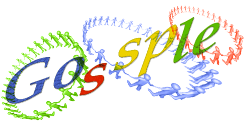In this area, we are investigating the use of P2P algorithms in sensor network systems. We observe many similarities between these two domains that we plan to leverage. Scale and dynamicity are among the most striking similarities between the two types of networks. However, sensor network specificities imply major adaptations of Internet-based P2P algorithms. So this new research area allows us to widen our application domain with specific applications but above all to vary some major properties of our target system and therefore generalize our work on fully decentralized algorithms.
Information dissemination in sensor networks
We conduct this activity in the context of monitoring children activities to detect obesity pathologies. This application brings us a challenging setting with respect to dynamics as sensors are embedded on human beings and are by essence mobile. In this context we are investigating methods for energy-efficient route discovery and for the reliable relaying of data from the sensor to the sink (monitoring station), so that the network lifetime can be maximized. While many approaches in this area rely on precise location information such as GPS, we want to avoid such techniques for cost, size but also performance reason, as GPS information is not available indoors. We are investigating the use of epidemic algorithms to trace sink location and efficiently transport data to a sink without flooding the network.
Power management in sensor networks
Energy consumption is the most important factor that determines sensor node lifetime. The optimization of wireless sensor network lifetime targets not only the reduction of energy consumption of a single sensor node but also the extension of the entire network lifetime. The sensor network lifetime is defined as the period during which the routing fidelity and the sensing fidelity of the network are guaranteed. Our goal is then to leverage node redundancy in WSNs to reduce and distribute the computational and communication energy consumption of the network between sensors. We consider that the cooperative nature of sensors offers significant opportunities to manage energy consumption.
We then propose a simple and adaptive energy-conserving topology management scheme, called SAND (Self-Organizing Active Node Density). SAND is fully decentralized and relies on a distributed probing approach and on the redundancy resolution of sensors for energy optimizations, while preserving the data forwarding and sensing capabilities of the network.

